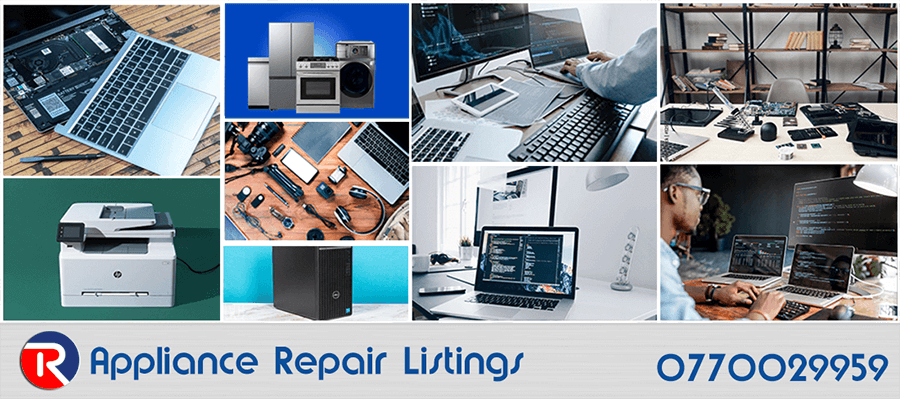
How to Fix a Laptop That’s Running Too Slow
By Repair.co.ke
A sluggish laptop can be frustrating, turning simple tasks into time-consuming ordeals. Whether it’s slow boot times, lagging applications, or delayed responses, a slow laptop often stems from a mix of software clutter, hardware limitations, or neglected maintenance. At Repair.co.ke, we’ve helped countless users restore their laptops to peak performance. In this 700-word guide, we’ll walk you through practical steps to diagnose and fix a laptop that’s running too slow, so you can get back to work or play without the lag.
Step 1: Free Up Disk Space
A nearly full hard drive can significantly slow down your laptop. When storage is low, your operating system struggles to manage temporary files and virtual memory. Start by checking your disk space: on Windows, right-click the C: drive in File Explorer and select “Properties”; on macOS, go to “About This Mac” and click “Storage.” Aim to keep at least 15–20% of your drive free.
To reclaim space, delete unnecessary files like old downloads, large videos, or unused applications. Use built-in tools like Windows’ Disk Cleanup or macOS’ Storage Management to identify and remove junk files. Empty the recycle bin or trash afterward to ensure the space is fully cleared. If you’re still low on storage, consider moving files to an external drive or cloud storage services like Google Drive or OneDrive.
Step 2: Manage Startup Programs
Laptops often slow down because too many programs launch automatically when you boot up. These background processes consume RAM and CPU resources, leaving less for your active tasks. On Windows, open Task Manager (Ctrl + Shift + Esc), go to the “Startup” tab, and disable non-essential programs by right-clicking and selecting “Disable.” On macOS, go to System Settings > Users & Groups > Login Items and remove unnecessary apps from the list.
Be cautious not to disable critical system processes—stick to recognizable applications like Spotify or Adobe. Fewer startup programs mean faster boot times and more resources for your daily use.
Step 3: Update Your Operating System and Drivers
Outdated software can cause performance issues due to bugs or inefficiencies. Ensure your operating system is up to date: on Windows, go to Settings > Windows Update; on macOS, check System Settings > Software Update. Updates often include performance optimizations and security patches that can boost speed.
Similarly, outdated drivers—software that connects your hardware to the OS—can slow things down. On Windows, use Device Manager to check for driver updates, or visit your laptop manufacturer’s website (e.g., Dell, HP, Lenovo) for the latest versions. On macOS, drivers are typically updated with system updates, but third-party hardware may require manual checks.
Step 4: Scan for Malware
Malware or viruses can hog system resources, causing slowdowns. Run a full scan using a reputable antivirus program like Windows Defender (built into Windows), Malwarebytes, or Avast. On macOS, while malware is less common, tools like Malwarebytes for Mac can help. If threats are detected, follow the software’s instructions to quarantine or remove them. To prevent future infections, avoid suspicious downloads and keep your antivirus updated.
Step 5: Optimize Your Browser
If your laptop feels slow primarily when browsing the web, your browser might be the culprit. Clear cached files and cookies: in Chrome, go to Settings > Privacy and Security > Clear Browsing Data; in Safari, it’s under History > Clear History. Disable or remove unused extensions, as they can consume significant resources. Consider switching to a lighter browser like Microsoft Edge if Chrome is too heavy for your system.
Step 6: Upgrade Hardware (If Necessary)
If software tweaks don’t help, your laptop’s hardware might be the bottleneck. Older laptops with 4GB of RAM or traditional hard drives (HDDs) often struggle with modern software. Upgrading to 8GB or 16GB of RAM can make a noticeable difference, especially for multitasking. Replacing an HDD with a solid-state drive (SSD) is even more impactful, as SSDs offer faster read/write speeds, drastically improving boot times and app loading.
Check your laptop’s manual or manufacturer’s website to confirm upgrade compatibility. If you’re not comfortable performing upgrades, contact a professional service like Repair.co.ke for expert assistance.
Step 7: Perform Regular Maintenance
Prevent future slowdowns with routine maintenance. Defragment your HDD monthly (Windows’ built-in Disk Defragmenter works well; SSDs don’t need defragmenting). Keep software updated, avoid installing unnecessary apps, and clean your laptop’s cooling system annually to prevent overheating, which can throttle performance.
When to Seek Professional Help
If your laptop remains slow after these steps, deeper issues like failing hardware or corrupted system files may be at play. At Repair.co.ke, we specialize in diagnosing and resolving complex performance problems, from motherboard repairs to full system reinstalls. Contact us for tailored solutions to get your laptop running like new.
By following these steps, you can breathe new life into your sluggish laptop. Start with the simplest fixes like freeing up space and managing startup programs, then progress to hardware upgrades if needed. With a little effort, your laptop can run smoothly again, keeping you productive and frustration-free.
Repair.co.ke – Your Trusted Laptop Repair Experts in Kenya